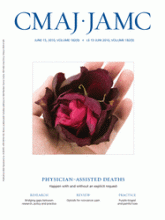A third of Canadian medical school graduates have chosen family medicine for their residencies, a percentage that primary care advocates say is good but still not good enough.
“I think we would be a lot more comfortable if we reached 40%,” says Dr. Cathy MacLean, president of the College of Family Physicians of Canada. “Ideally, in Canada, what you want is 50% of physicians to be family doctors.”
Compared to residency preferences as recently as 2003, however, this year’s results appear to bode well for the future of primary care in Canada. Of the 2438 Canadian medical students who participated in the 2010 residency match, 1388 applied for family medicine in the first iteration.
Internal medicine was a distant second in popularity (660 applicants), followed by pediatrics (253 applicants). The least popular choices were hematological pathology (four applicants), medical biochemistry (3 applicants) and neuropathology (3 applicants).
“The match results follow a similar pattern to previous years,” Dr. Mathieu Dufour, chair of the education and professionalism committee of the Canadian Association of Internes and Residents, writes in an e-mail. “It’s good, however, to see that more residents have chosen family medicine training, since there’s a significant need for family medicine physicians in Canada.”
After two iterations, a total of 823 Canadians were matched to family physicians positions. Nearly three-quarters of the 775 Canadian graduates matched in the first iteration only applied to family medicine.
In a country hungry for more primary care physicians, these numbers are certainly more encouraging than the match results of 2003, when only 24% of Canadian medical students made family medicine their first residency choice. Also encouraging is the fact that more male graduates are opting for careers in primary care.
A record 2846 medical graduates will begin their residencies in July. Image courtesy of © 2010 Jupiterimages Corp.
“Men are showing a steady increase in interest in family medicine,” says Sandra Banner, executive director and chief executive officer of the Canadian Residency Matching Service (CaRMS).
The increase in popularity of family medicine in recent years has been attributed to several factors, the most significant perhaps being an increase in pay. The gap in income between family physicians and specialists has shrunk in the past few years, which contributes not only to bottom lines but also to the prestige of a career in primary care.
Another factor may be increased provincial investment in the creation of primary care teams, which allow new doctors to work with nurses, pharmacists, social workers and other health care professionals instead of going it alone. Medical schools have also made efforts to increase interest in family medicine, including creating family medicine interest groups for students and involving more family doctors in teaching.
“There has been a push to get more medical students interested in family medicine as a career choice,” says MacLean.
Overall, 2846 medical graduates will begin their residencies on July 1 —a record total. The increase in positions is the direct result of provincial investments to accommodate increased undergraduate class sizes. “The postgraduate system keeps pace with the undergraduate system, unlike in many other countries,” says Banner.
Of the 2438 Canadian medical graduates in the match, only 4% failed to find positions in the first iteration. The primary reasons that 90 Canadians did not find residency spots were unrealistic career goals, failure to apply to a sufficient number of programs and failure to apply to different geographic areas. The vast majority of those who did find positions, however, were matched to their desired field. “Nine out of 10 go into their career of choice,” says Banner. “That points to very well-working system.”
International medical graduates (IMGs), on the other hand, were less successful this year than in 2009. Nearly 1800 IMGs participated in the 2010 match, but only 380 secured positions. Including those matched outside the CaRMS program, 429 IMGs found residency positions, a 4% drop from last year. According to Dr. Nick Busing, president and chief executive officer of the Association of Faculties of Medicine of Canada, the demand for postgraduate positions in Canada from abroad will only increase as more Canadians pursue medical studies in other countries.
“We have a lot of Canadians studying abroad,” says Busing. “There will be an increase of pressure on the system from those folks.”
Footnotes
-
Published at www.cmaj.ca on May 11









